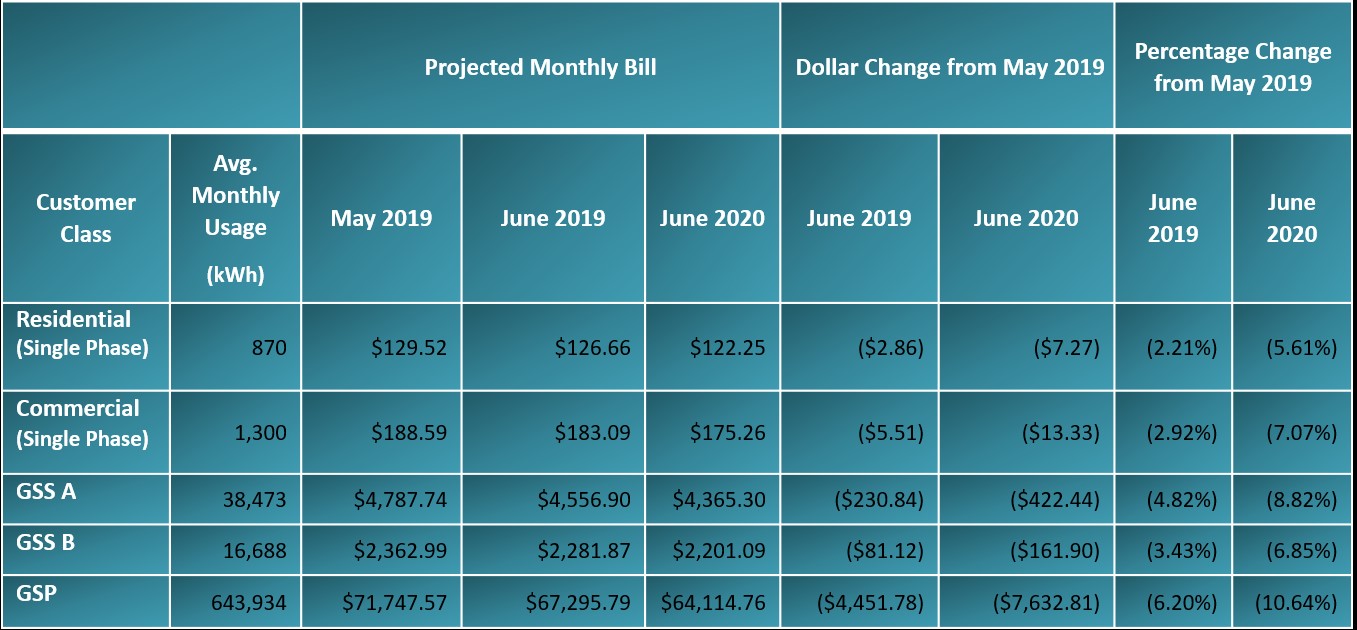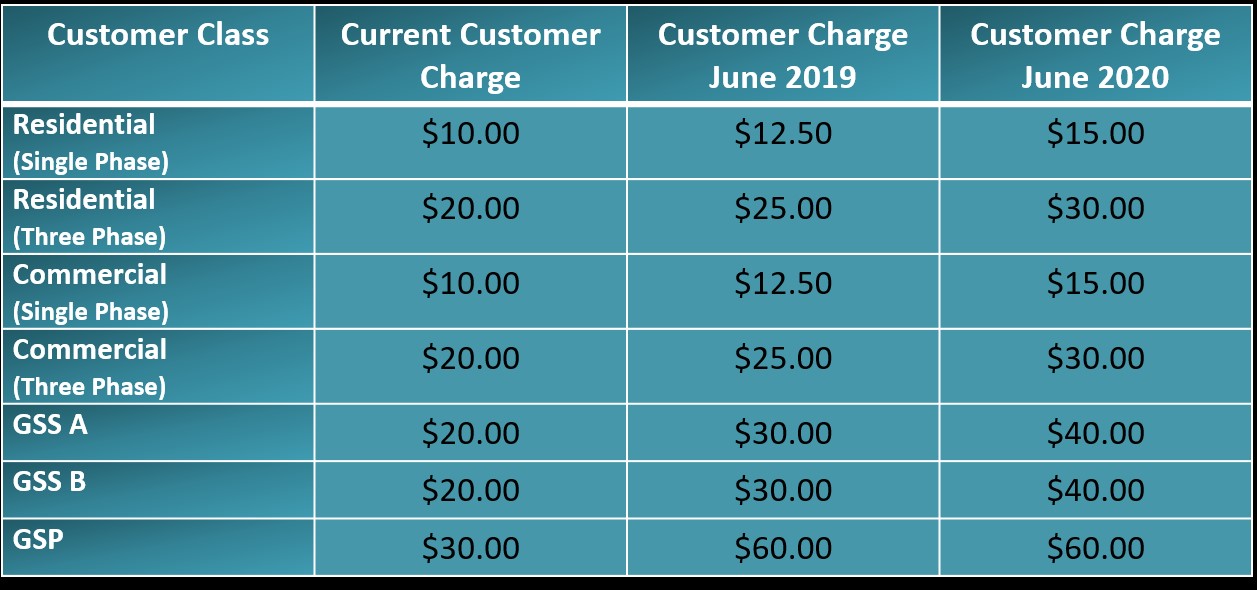In its regular monthly meeting, the OMU Utility Commission approved measures that would result in a electric bill decrease for its customers beginning June 1, 2019.This plan now go before the Owensboro City Commission for two public readings.
The Utility Commission approved parts of a three-pronged approach to stabilizing rates and decreasing the customers’ bills over the next two years. The three components include: increasing of the electric base rate to meet debt service coverage metrics required by the utility’s bonds; the defeasance or early payment of bonds and the decrease of the Energy Cost Adjustment (ECA).
Each of these components are detailed below.
Reaching rate stability
In November 2018, OMU presented its most current five-year financial forecast. At that time OMU announced that its rate and financial plan based upon those projections revealed that it could begin to lower rates for its customer-owners. This was a result of a series of steps taken by the Owensboro Utility Commission and OMU leadership over the past three years. Major factors were the decision to shut down its coal-fired power plant facility in 2020 and the entering into a power purchase agreement with Big Rivers Electric Corporation and the inclusion of solar and hydro power in its supply portfolio.
The projection and plan were supported by the most recent Integrated Resource Plan, which examined a number of power supply alternatives based upon the least economic impact to the utility’s customer-owners. A critical factor in this plan is the need to meet OMU’s debt service coverage ratio which speaks to the financial health and viability of the utility.
Since the November announcement, a cost-of-service study was conducted by a third-party firm, Burns & McDonnell. This study is performed to assess revenue requirements to cover OMU’s costs, determine appropriate allocation of the costs associated with each customer class (residential, commercial and large commercial tiers) and to recommend the appropriate base rates for each customer class.
Three Key Components
-
- The plan to reduce rates for OMU customer-owners is dependent upon three key components: an increase in OMU’s base electric rate, reduction of future Energy Cost (ECA) and Environmental Control Cost (ECCA) adjustments and the defeasance and refunding of a portion of bonds issued by the utility.
- Base Rate: The increase in OMU’s base rate is necessary, in conjunction with bond defeasance/refunding to ensure OMU’s financial obligation with respect to debt service coverage is met annually.
- ECA & ECCA: The base rate increase will be more than offset by the significant reduction of environmental costs (ECCA) associated with the operation of the coal-fired Elmer Smith Station and a forecasted decrease in the ECA in FY2020. There are no projected ECA increases in the five-year forecast as a result of the shutdown of Elmer Smith and the subsequent power purchase agreement with Big Rivers Electric Corp.
- The base rate increase will be more than offset by ECA and ECCA rate decreases resulting from shutdown of Unit 1 in 2019 and Unit 2 in 2020.
- The plan to reduce rates for OMU customer-owners is dependent upon three key components: an increase in OMU’s base electric rate, reduction of future Energy Cost (ECA) and Environmental Control Cost (ECCA) adjustments and the defeasance and refunding of a portion of bonds issued by the utility.
-
-
- Bond Defeasance/Refunding: The defeasance, refunding and subsequent lowering of the utility’s debt requirement would be achieved through the use of available OMU reserves.
- Defeasance, or the early payment/refunding of bonds in fiscal years 2019 and 2020, would lower debt and therefore reduce OMU’s revenue needs and further lessen the need for recovery of costs from customer-owners.
- Up to $19 million in reserves will be used to pay off portions of Series 2010 and Series 2013 bonds. This will result in a total savings of $22.2 million.
- Bond Defeasance/Refunding: The defeasance, refunding and subsequent lowering of the utility’s debt requirement would be achieved through the use of available OMU reserves.
-
Impact on Customers
- Residential Bill: While the rate restructuring plan is complex, the bottom line is it is projected that the impact of these proposed changes on the average residential customer over the next two years would be an estimated $7.27 per month or approximately 6.1 percent by June 2020.
- These proposed rates and estimates are based upon projected numbers and are subject to a number of factors.
- Decreases are also projected in each of the following three years through FY2024.
- The chart below shows the impact on each customer class, based on average usage for that class, over the next two years.
- Customer Charge: Part of the rate restructuring is an increase in the Customer Charge for all customers. These suggested increased are included in the analysis of overall impact on customers shown above. The June 2020 customer charge increase is offset by a corresponding reduction in the per kWh rate.
- Other portions of the rate ordinance include proposed updates that will not, in general, affect most residential customers.
|
Date |
Step |
|
April 16, 5:00 p.m. |
Defeasance and Rate Ordinances presented for first reading to the Owensboro City Commission |
|
May 7, 5:00 p.m. |
Defeasance and Rate Ordinances presented for second reading and vote to the Owensboro City Commission |
|
June 1, 2019 |
Effective date |


